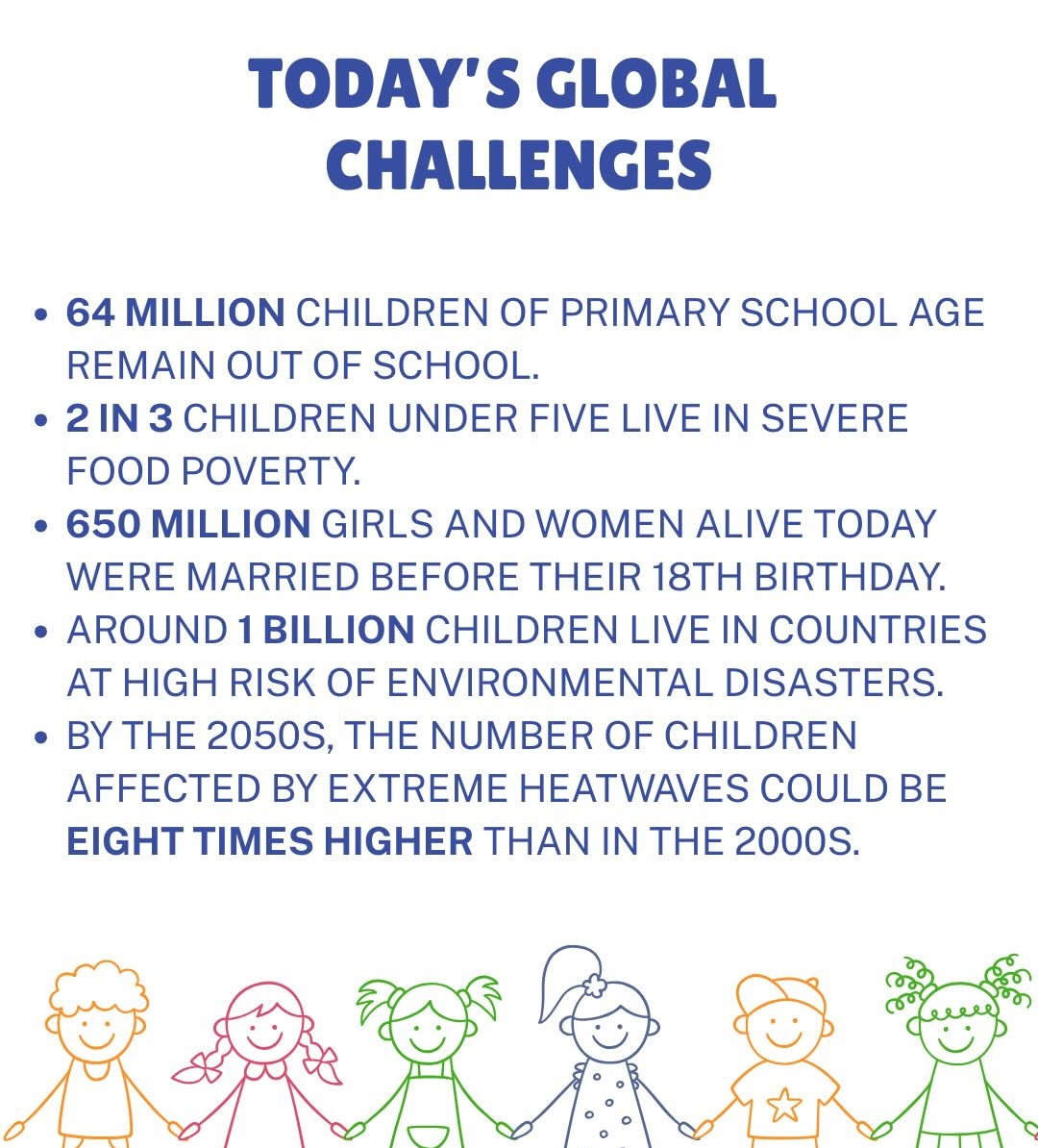Context:
UNICEF’s flagship report, The State of the World’s Children 2025: Ending Child Poverty – Our Shared Imperative, was released on World Children’s Day (November 20, 2025). The report warns that more than 400 million children worldwide live in multidimensional poverty, facing deprivation in at least two basic needs such as nutrition, sanitation, or education.
Key Findings:
1. Magnitude of Deprivation
o According to UNICEF, 417 million children in over 130 low- and middle-income countries suffer from “severe deprivation” in at least two of the six measured domains.
o These six dimensions are: education, health, housing, nutrition, sanitation, and water.
o Furthermore, 118 million children endure three or more of these deprivations, and 17 million are deprived in four or more.
2. Sanitation as the Most Common Deprivation
o Sanitation is the most pervasive form of deprivation: in low-income countries, 65% of children lack access to a toilet.
o In lower-middle-income countries it’s 26%, and even in upper-middle-income countries, 11% of children lack proper sanitation.
3. Monetary Poverty
o In addition to material deprivations, monetary poverty remains acute: over 19% of children globally live on under US$ 3 per day (extreme monetary poverty).
o Nearly 90% of these extremely poor children are located in Sub-Saharan Africa and South Asia.
Regional Patterns & Implications:
-
- Geographical Concentration: The highest rates of multidimensional child poverty are concentrated in Sub-Saharan Africa and South Asia.
- Socioeconomic Effects: Children deprived in multiple dimensions are likely to suffer long-term adverse effects, including poor health, reduced learning outcomes, stunted development, and psychosocial stress.
- Intergenerational Effects: Persistent multidimensional poverty undermines future economic productivity, increases inequality, and can perpetuate cycles of disadvantage, making it a long-term challenge for both social and economic development.
- Geographical Concentration: The highest rates of multidimensional child poverty are concentrated in Sub-Saharan Africa and South Asia.
Policy Recommendations:
According to the report, to address this multidimensional poverty among children, governments need to:
1. Make Child Poverty a National Priority
o Elevate the issue in national development plans, budgeting processes, and long-term strategies.
2. Invest in Social Protection
o Expand cash support programs for families with children.
o Build resilient social safety nets that can respond in crises (climate, debt, conflict).
3. Strengthen Access to Essential Services
o Guarantee universal access to education, healthcare, clean water, sanitation, nutrition, and housing.
o Prioritize investments in infrastructure and public services in under-served communities.
4. Target Vulnerable Populations
o Focus on youngest children, children with disabilities, and those in fragile or crisis settings.
o Use disaggregated data to identify and support high-risk groups.
Conclusion:
This report ties directly into Sustainable Development Goal 1 (No Poverty), SDG 3 (Good Health & Well-being), SDG 6 (Clean Water & Sanitation), and SDG 4 (Quality Education). Countries like India, which have large child populations, can use such data to fine-tune social protection, public service delivery, and priority-setting in their welfare programs. It emphasizes the importance of targeted interventions for children in poor and vulnerable demographics.







